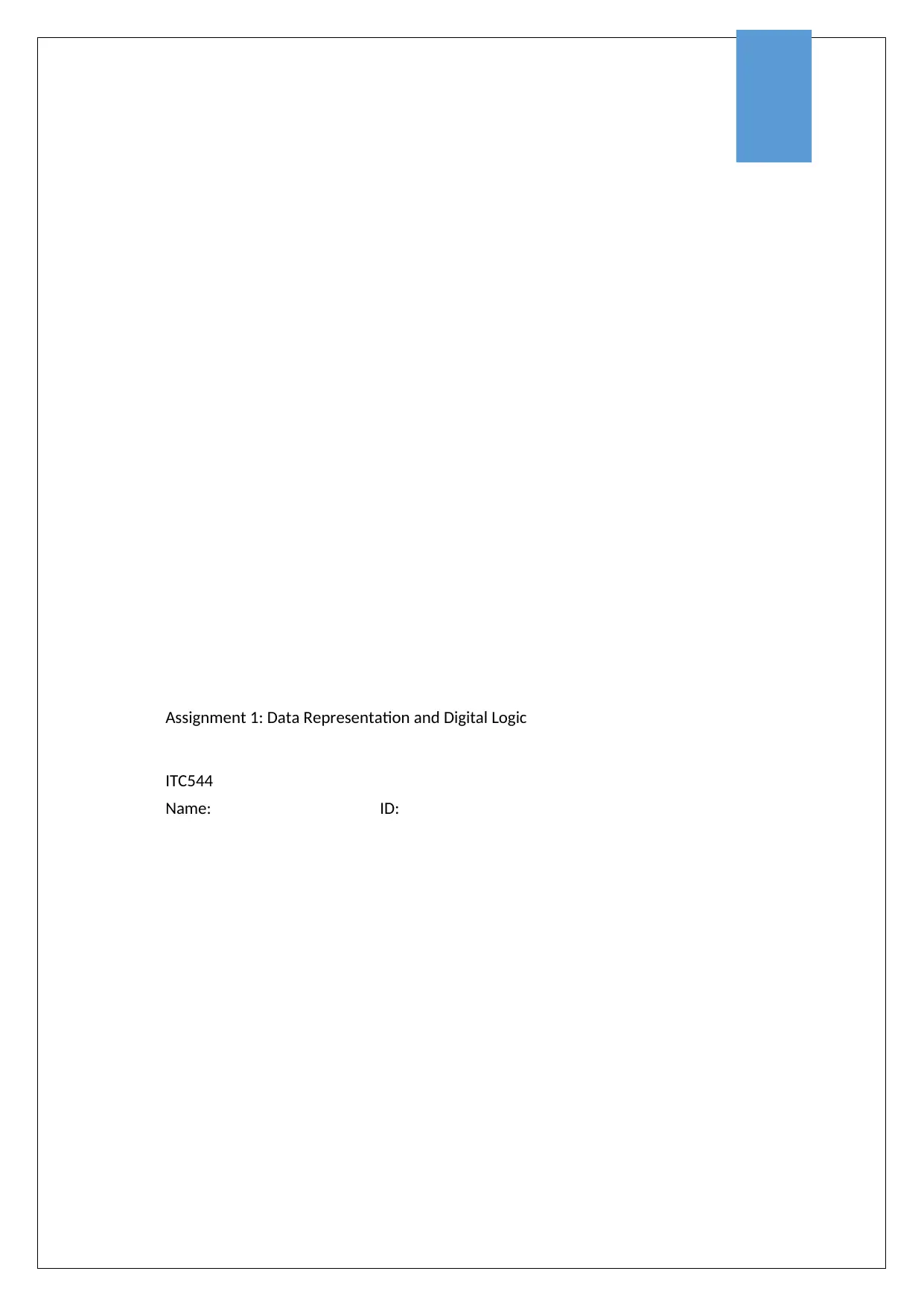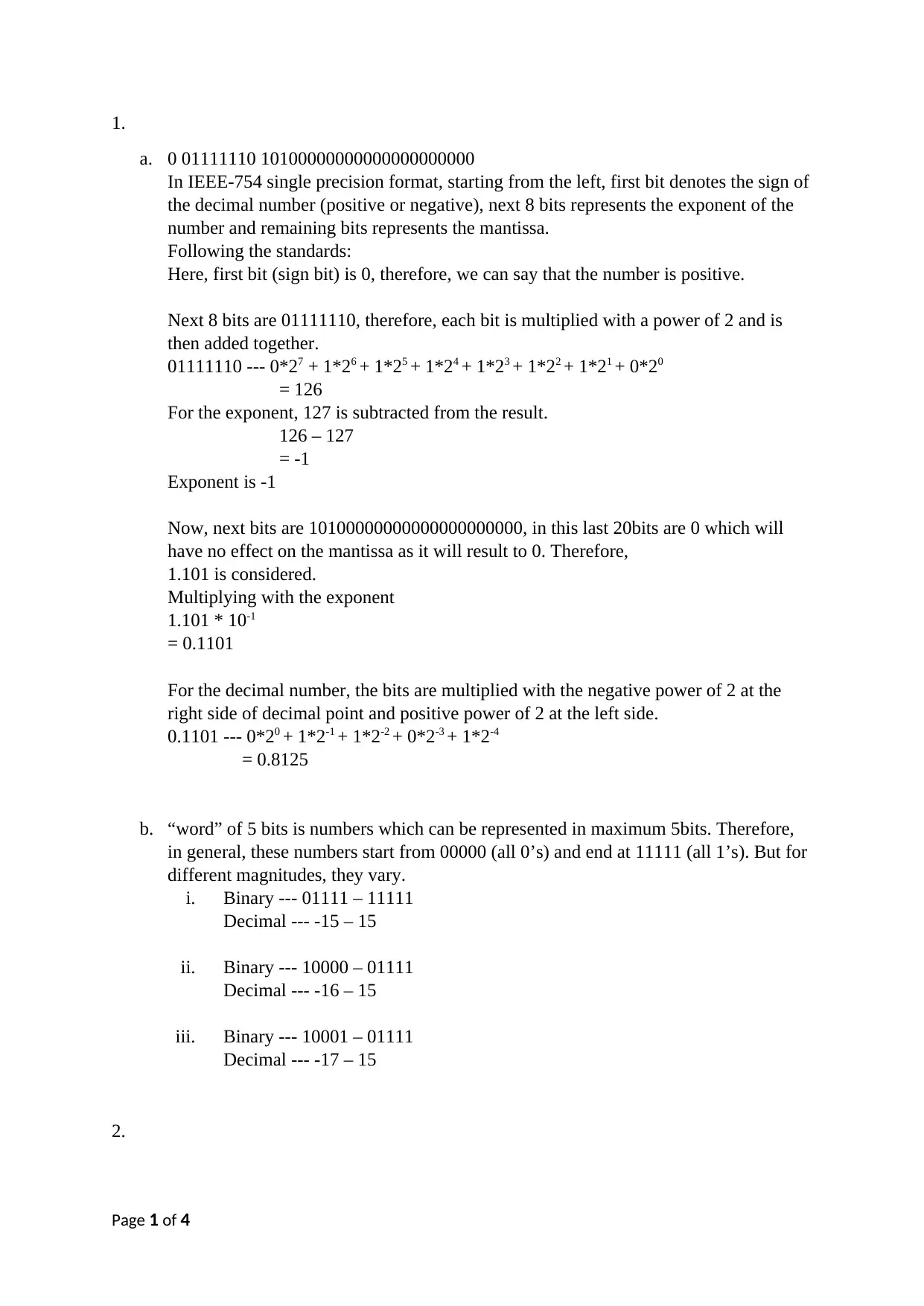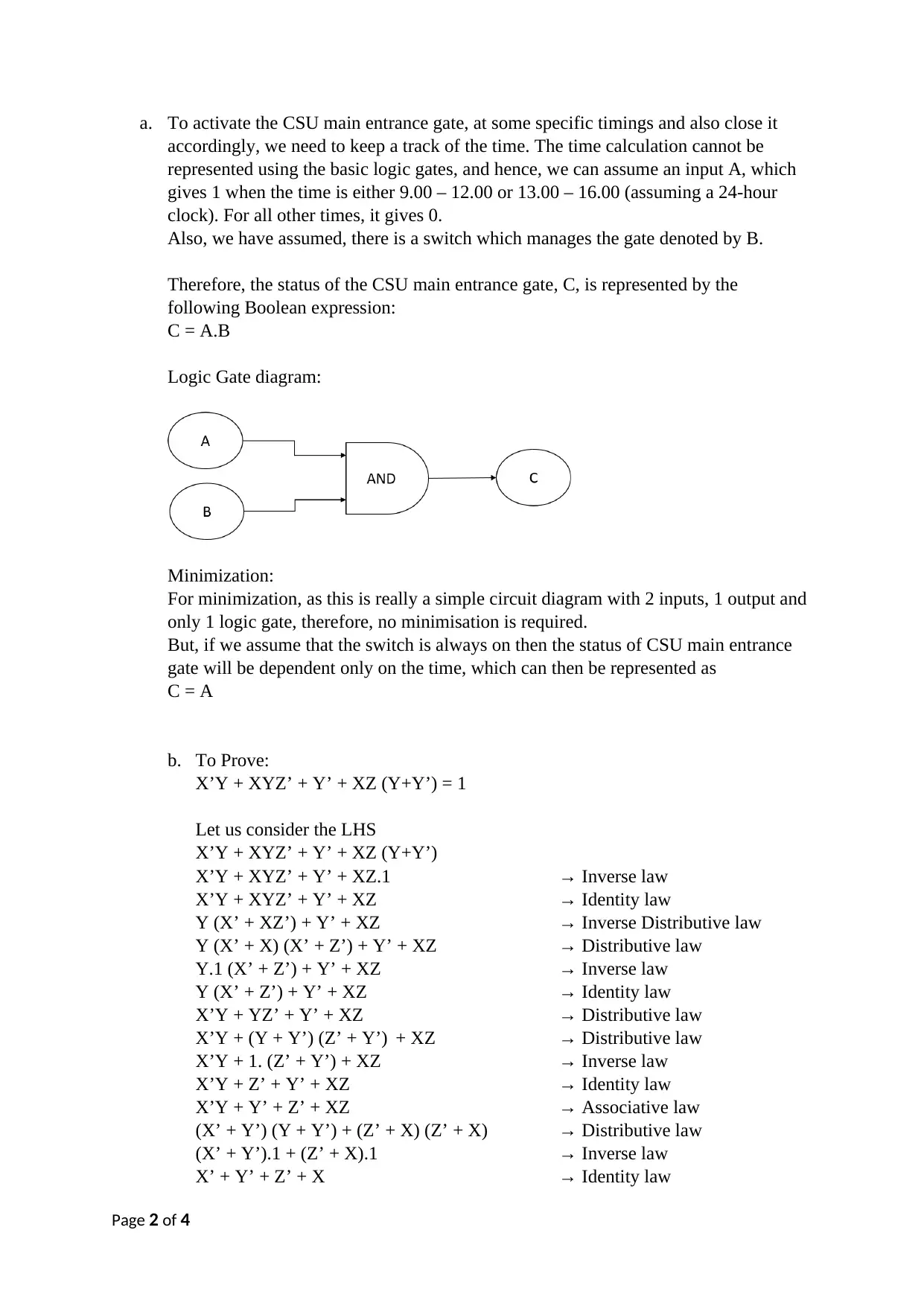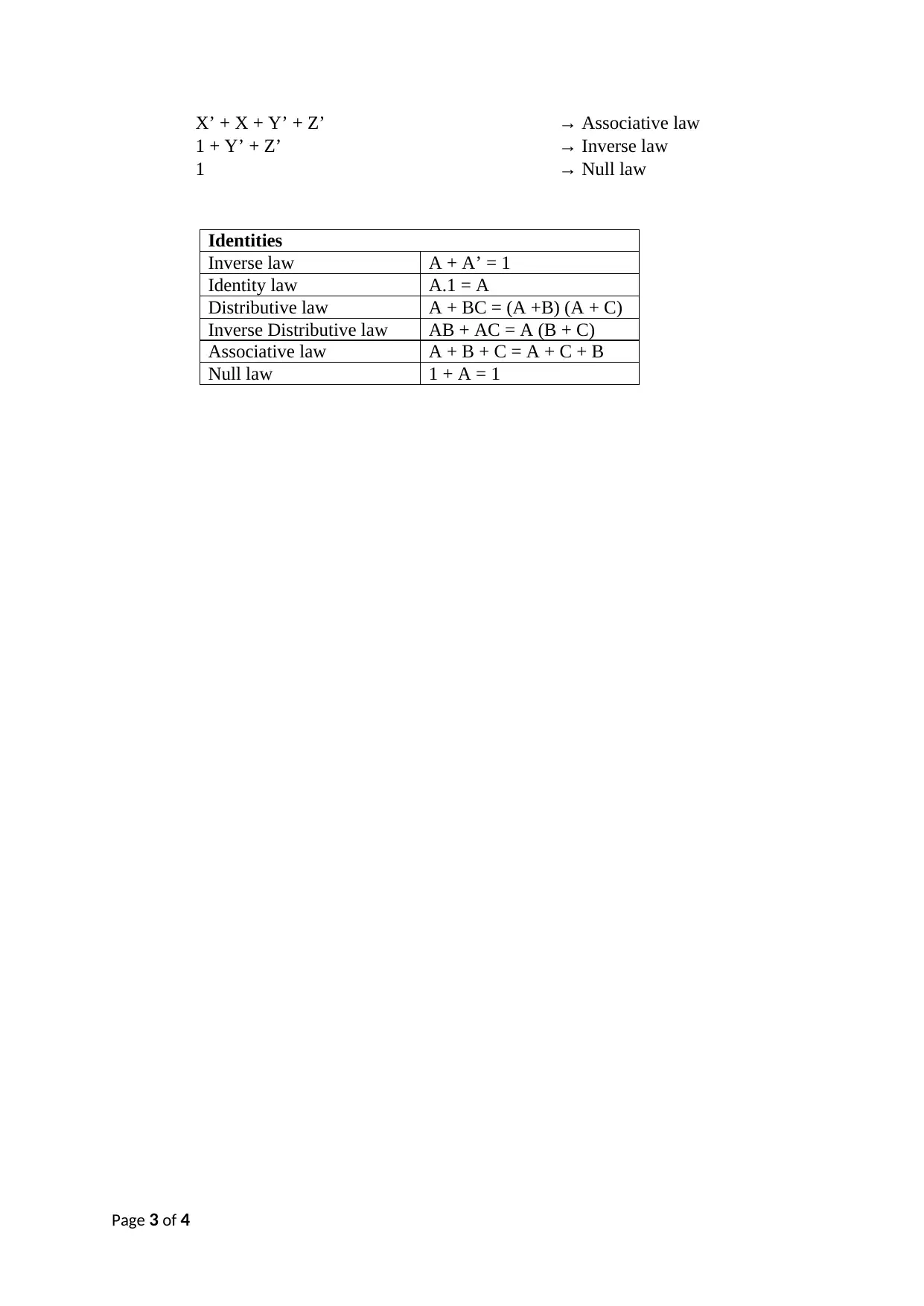ITC544 Assignment 1: Data Representation, Digital Logic Analysis
VerifiedAdded on 2019/10/31
|4
|909
|180
Homework Assignment
AI Summary
This document provides a detailed solution for Assignment 1 of the ITC544 course, focusing on data representation and digital logic. The assignment covers the IEEE-754 single-precision format, explaining how to interpret and convert binary numbers into decimal values. It also includes an analysis of a 5-bit "word" representation and its corresponding decimal ranges. Furthermore, the document presents a solution to a problem involving logic gates, Boolean expressions, and the activation of a CSU main entrance gate based on time and switch input. The solution includes a Boolean expression, a logic gate diagram, and a simplification analysis. Finally, it includes a proof of a Boolean expression using laws of Boolean algebra.
1 out of 4











![[object Object]](/_next/static/media/star-bottom.7253800d.svg)